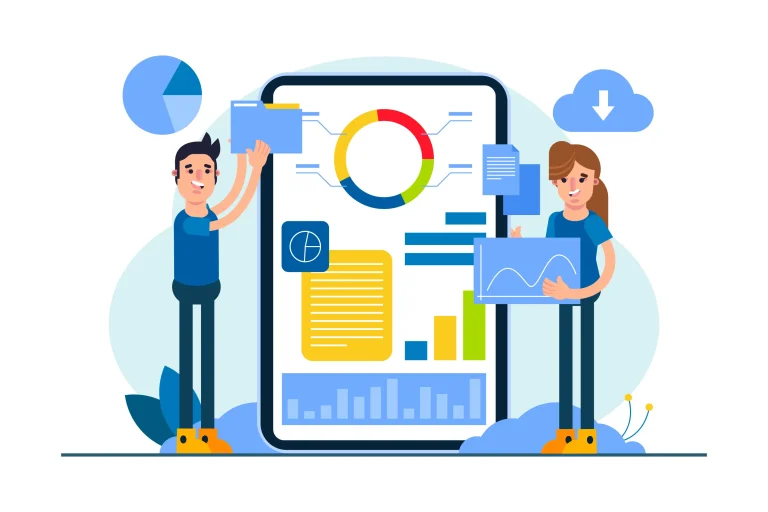The Difference Between a Website That Works and One That Converts

Introduction
In today’s digital-first world, every business knows the importance of having a website. It acts as your brand’s online identity, often serving as the first touchpoint between you and your potential customers. But here’s the reality—not all websites are created equal. Some websites simply “work,” meaning they function, display information, and load when visited. Others go one step further: they convert visitors into customers. This difference may sound subtle, but it is what separates a digital brochure from a revenue-generating machine.
A website that merely works might inform users about your business, but a website that converts drives measurable outcomes leads, sales, subscriptions, or appointments. Understanding this distinction is crucial because businesses that fail to optimize for conversions often miss opportunities and lose prospects to competitors who have nailed the art of conversion-focused design.
In this blog, let’s break down the difference between a website that just works and one that truly converts, along with strategies you can adopt to transform your site into a high-performing digital asset.
1. Functionality vs. Purpose
A website that works fulfills its basic function it loads, displays your services or products, and has clickable links. Visitors can browse your “About Us” page, check contact details, and perhaps even see your product catalog.
But a website that converts goes beyond just working. It is designed with purpose and intention. Every page, every button, and every image serves a role in guiding the visitor toward a specific action. For instance, a converting website doesn’t just show a “Contact Us” page—it strategically places lead forms, compelling CTAs (call-to-actions), and even chatbot assistance to ensure prospects don’t drop off.
2. Design that Looks Good vs. Design that Sells
A website that works may look attractive, with professional graphics, appealing colors, and a neat layout. But good looks alone don’t guarantee conversions.
A converting website incorporates conversion-driven design principles:
- Visual hierarchy: Highlighting the most important actions first.
- Strategic CTA placement: Positioning buttons like “Buy Now,” “Get a Quote,” or “Book a Demo” where users are most engaged.
- Trust signals: Showcasing testimonials, client logos, or certifications that reassure customers.
- Mobile-first design: Ensuring users on smartphones have an equally seamless experience.
Simply put, design for aesthetics impresses, but design for conversions sells.
3. Information vs. Communication
Websites that work provide information—they tell users about the company, the products, and services. But dumping information without structure can overwhelm visitors.
A converting website, on the other hand, communicates value. Instead of just stating features, it highlights benefits. For example:
- A working site might say: “We offer 24/7 support.”
- A converting site reframes it: “Never feel stuck—our 24/7 support ensures you get answers anytime, anywhere.”
By speaking directly to the customer’s needs, converting websites build emotional connections and influence decision-making.
4. Traffic vs. Targeted Traffic
A working website is like a shop that opens its doors—it’s there, ready for visitors. But if the wrong crowd is walking in, sales won’t happen.
A converting website not only attracts traffic but attracts the right traffic. This is where SEO (Search Engine Optimization), PPC (Pay-Per-Click), and content marketing play vital roles. It ensures that the people landing on your site are genuinely interested in what you offer. For example, a fitness trainer’s converting website would optimize for keywords like “personal trainer near me” instead of generic terms like “fitness tips.”
Conversions thrive on relevance.*
5. Navigation vs. User Journey
A working website may have menus and links that technically allow users to navigate. However, users might get lost or unsure of where to go next.
A converting website carefully designs the user journey. From the moment a visitor lands, they are gently nudged toward the next step—whether it’s signing up for a newsletter, booking a call, or making a purchase. Clear pathways, minimal distractions, and logical page structures ensure users don’t leave before taking action.
6. Static vs. Interactive
A working website often feels static—like reading a digital brochure.
A converting website, however, engages users through interactivity. Think chatbots that answer questions in real time, interactive calculators (like mortgage or ROI calculators), product videos, or quizzes that recommend products. These not only hold attention but also collect valuable customer data that improves future conversions.
7. Generic vs. Personalized
A working website often delivers the same experience to every visitor.
A converting website leverages personalization. By using tools like cookies, analytics, and CRM integration, it can show tailored offers, recommend products, or display content based on visitor behavior. For example, an e-commerce store can show returning users items related to their last purchase—making the shopping journey more relevant and increasing the likelihood of a sale.
8. Vanity Metrics vs. Real Results
Working websites may boast about vanity metrics such as “10,000 visitors per month.” But if none of those visitors convert, what’s the point?
Converting websites focus on KPIs that matter:
- Conversion Rate (CR)
- Cost Per Lead (CPL)
- Average Order Value (AOV)
- Customer Lifetime Value (CLV)
The ultimate goal isn’t just visits—it’s revenue growth.
9. One-Time Build vs. Continuous Optimization
Many businesses treat their website as a one-time project: once it’s live, it’s considered “done.” That’s a website that merely works.
A converting website, however, is continuously optimized. Businesses monitor analytics, run A/B tests, tweak CTAs, refine landing pages, and evolve based on customer behavior. Digital success is a moving target, and the best converting websites adapt to stay ahead.
10. Passive vs. Active Selling
A working website acts passively—it waits for users to reach out.
A converting website actively sells. It uses persuasive copywriting, urgency triggers (like limite/d time offers), remarketing strategies, and seamless checkout processes. It doesn’t just provide options; it encourages action.
Conclusion
The difference between a website that works and one that converts is the difference between a digital placeholder and a business growth engine. While functionality is essential, it’s just the foundation. The real impact comes when you design your website with purpose—ensuring that every element, from navigation to CTAs, guides visitors toward becoming paying customers.
In an era where attention spans are shrinking and competition is fierce, businesses can no longer afford to settle for websites that simply exist. They need websites that deliver measurable results—websites that convert.
So, the next time you look at your digital presence, ask yourself: Is my website just working, or is it truly converting? The answer could determine the future of your business growth.
Table of content
- Introduction
- 1. Functionality vs. Purpose
- 2. Design that Looks Good vs. Design that Sells
- 3. Information vs. Communication
- 4. Traffic vs. Targeted Traffic
- 5. Navigation vs. User Journey
- 6. Static vs. Interactive
- 7. Generic vs. Personalized
- 8. Vanity Metrics vs. Real Results
- 9. One-Time Build vs. Continuous Optimization
- 10. Passive vs. Active Selling
- Conclusion










